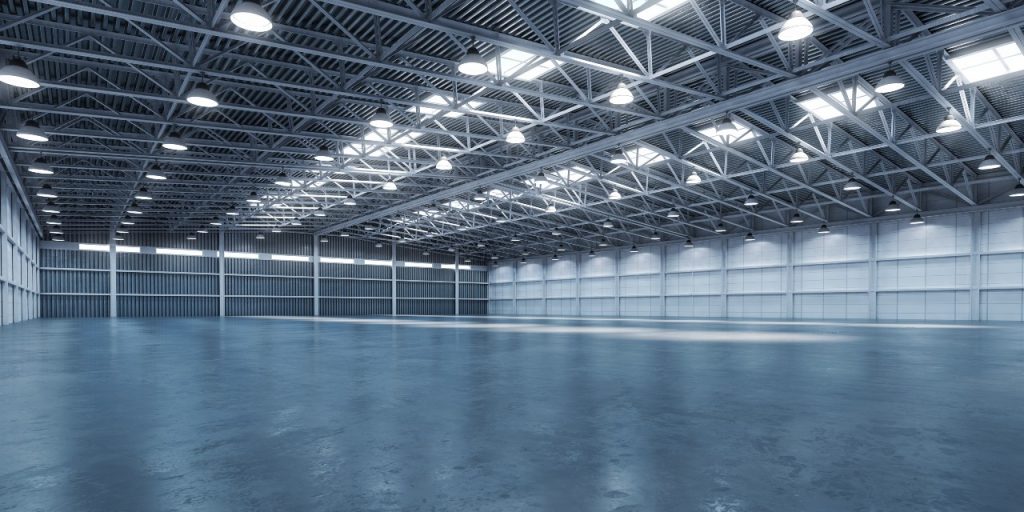Commercial real estate is such a vast industry that we rely on real estate asset classes to provide some kind of order. This can especially be useful when it comes to property valuation. But understanding the different commercial real estate classes can help you strategize your investments too. Today, I’m going to walk you through some of the major real estate asset classes (along with a few rare ones). We’ll take a look at what constitutes a real estate asset class and whether or not it’s the best investment for your unique situation. It’s a dense topic, so let’s dive in!
Multifamily
Those new to real estate may assume multifamily properties are residential real estate. If you can live in it, it’s residential, right? However, when you own a building that can house more than one family in separate units, the overall building ownership is considered multifamily real estate. In most cases, multifamily properties will be occupied by individuals, families, or a combination of the two. You’ll find multifamily properties in sleepy suburbs and bustling downtown city blocks alike. Some examples of multifamily properties include:
- Duplex, Triplex, and Quadplex Rentals
- 5-Plus Unit Apartments (Walk-Ups, Garden/Low-Rise, Mid-Rise, High-Rise)
- Student Housing
- Senior/Assisted-Living Facilities
Pros: The short-term lease agreements and natural turnover allow for quick adaptability and control in response to market fluctuations. Multifamily properties also offer essential real estate because people will always need a place to live. Investing in multifamily real estate provides opportunities which include leverage, tax-advantaged income due to depreciation, and tenant-paid equity. Certain markets have supply restrictions which will provide a healthy pool of renters.
Cons: Investing in multifamily properties are subject to the at-times volatile fluctuations of the market. This can influence whether people prefer renting to buying as well as the areas to which they’d like to move. In some cases, this could actually be in your benefit. I’m still considering it a con overall because you’d probably enjoy a little more predictability in your investment. Multifamily properties can also be so nuanced in their differences that they require a fair amount of research compared to other real estate asset classes. Finally, multifamily investments are subject to local governmental restrictions but, all in all, present a great asset class for investments over a longer period of time.
Retail
If you can sell goods or services out of it, chances are good that it’s a retail property. This diverse real estate class has so many exceptions and nuances that it can be tough to narrow it down further. Because of this, I’ll just jump into a few examples.
- Shopping Complexes and Strip Malls
- Restaurants
- Community-Specific Retail Complexes
- Outparcels
Pros: Retail properties are among the real estate classes offering longer leases. This means more financial stability for investors. The average retail property lease runs for anywhere between five and 10 years.
Cons: Recent eCommerce trends have significantly reduced interest in brick-and-mortar shopping experiences. Obviously, the pandemic didn’t help this situation. Even with America beginning to return to “normal”, Western culture has a taste for delivery thanks to giants like Amazon. Also, with such long-term leases, the eventual point when a tenant chooses to not renew their lease can cause a steep drop in income. Finally, most retail leases have built-in language limiting rental increases over a certain period of time. Because of this, you’ll need to strategize so that your expenses don’t outweigh your income over time.
Industrial
Buildings that fall under the industrial banner of real estate asset classes are typically utilized for the manufacturing of goods. Because of this, they are often strategically positioned with logistics in mind. Industrial properties can also be used for research and development, storage, and other non-retail functions. Examples include:
- Light or Heavy Assembly Warehouses/Factories
- Distribution Warehouses
- Flex Purpose Warehouses
Pros: Between the generally long-term leases and relatively low overhead costs, industrial properties often make sound investments. In most cases, industrial properties are leased by a single tenant. This makes them an opportune investment for those looking to avoid complex multi-tenant leases. Also, with demand having shifted dramatically to e-commerce in the last decade, industrial properties are hotter than ever.
Cons: Because the lease is typically filled by a single tenant, this investment doesn’t offer much diversity. When the lease ends, you may face a sudden drop in income if they choose to vacate instead of renew. Similar to retail properties, you also run the risk of spending more on maintenance and upkeep than you make. This requires a tight strategy and careful planning when determining the lease language for rent increase limitations.
Office
The office category of real estate asset classes comprises properties dedicated to the housing and running of business enterprises. An office property is responsible for accommodating staff and providing meeting areas such as conference and break rooms. The most attractive office properties will also offer state-of-the-art internet capabilities and other features crucial to modern business. Making up one of the most diverse real estate asset classes, office properties are generally summed up with:
- Small Single-Unit Offices
- Low-Rise, Mid-Rise, and High-Rise Multi-Unit Office Buildings
Pros: Office spaces generally involve the security of long term leases in the five to 10-year range. They also frequently house multiple tenants which diversifies your investment portfolio and adds security. If one tenant vacates, it’s less stressful knowing that others are still there to lessen the blow.
Cons: Office properties tend to have high overhead because of all of the bells and whistles a modern company requires to operate. The more your space offers, the more attractive it will be to prospective tenants. Therefore, you don’t want to cut corners in preparing your office property for tenant needs. Also, as is the case with retail and industrial classes, office tenants that choose not to renew their leases can significantly disrupt your income. These properties usually have similar rent increase limitations, so a sound strategy is integral. Otherwise, you may end up eventually sinking more into upkeep than you’re making in rent collection.
Hospitality
Hotels, from small boutique affairs to grandiose resorts, make up the hospitality class of real estate assets. These temporary accommodations can include everything from basic rooms with hourly rates to full scale resorts with hosts of amenities. Properties falling under the hospitality commercial real estate class include:
- Limited and Full Service Accommodations
- Extended Stay Accommodations
- Resorts
Pros: Because of the incredibly short-term leases built into the hospitality experience, rates can be raised quickly.
Cons: The fluidity of leases means that waning demand can also force investors to rapidly drop rates. Hospitality properties also usually require complex management skills. This is because the real estate management and day-to-day operations are often kept separate, requiring two managing entities. Furthermore, alternatives to standard hospitality options (like Airbnb) have thrown a wrench in the gears in recent years. Airbnb aside, these properties are considerably large investments, so the barriers to entry can be daunting.
Land
All of the real estate asset classes we’ve examined so far are defined by their property structures. But commercial real estate classes even include land without any structure whatsoever. Since structures are so nuanced in their differences, land is actually the easiest real estate class to identify. Yet, even land has its sub-categories. Examples of the land real estate class include:
- Agricultural/Greenfield Land
- Vacant Infill Land
- Brownfield Land
Pros: With a solid strategy, land can offer the highest return of all of the real estate classes.
Cons: High reward rarely comes without high risk and the land class is no different. With land, the investor is usually solely responsible for any revenue generation, so an airtight strategy is crucial. You may also need to navigate through governmental red tape with this asset class.
Special Purpose
Some properties offer such a distinct function that they defy the looser guidelines of common real estate asset classes. These require their own Special Purpose classification. Just a few examples of this rare class include:
- Churches
- Schools
- Theaters
- Theme Parks
Mixed Use
Even with the multitude of real estate asset classes available to us, there are some that just defy categorization. We shuffle those under a general category often populated by hybrid properties. For example, a storefront with multifamily apartments above it would constitute a multipurpose classification. Similarly, an industrial facility with an attached retail showroom meets this classification. The pros and cons of multipurpose properties would be influenced by the types of commercial real estate classes housed in the structure.
As I mentioned earlier, real estate asset classes present a dense topic, but one that I find personally fascinating given my history working in wealth management. But it’s an important topic for investors to comprehend since it strongly assists in the early development of your investment strategy. These classifications serve to make commercial real estate less daunting to new investors. While you don’t need to master every class, knowing the ins and outs of the classes that interest you will start you out on a sure foot.












